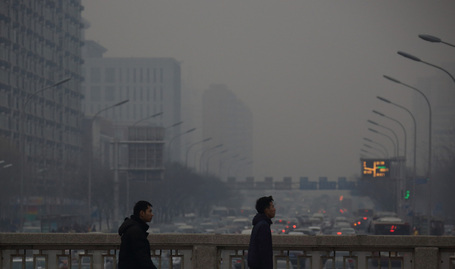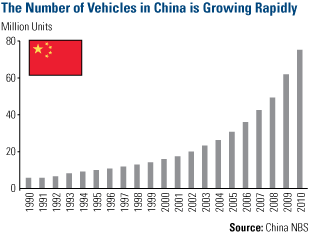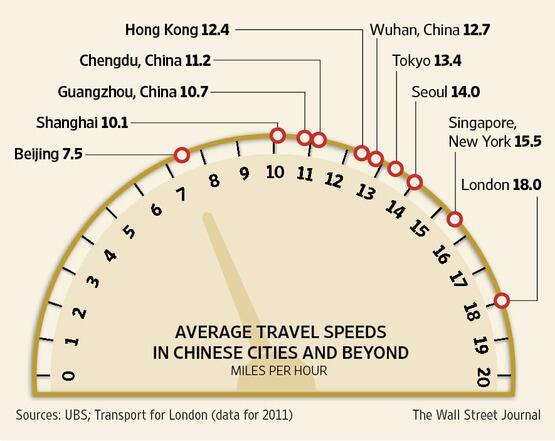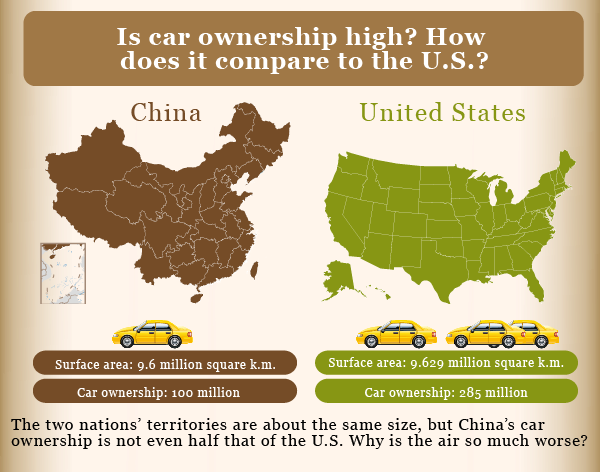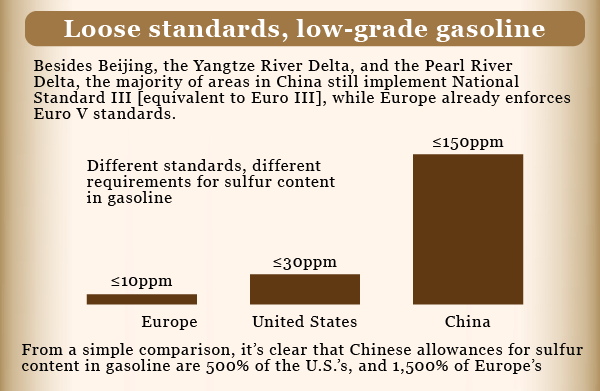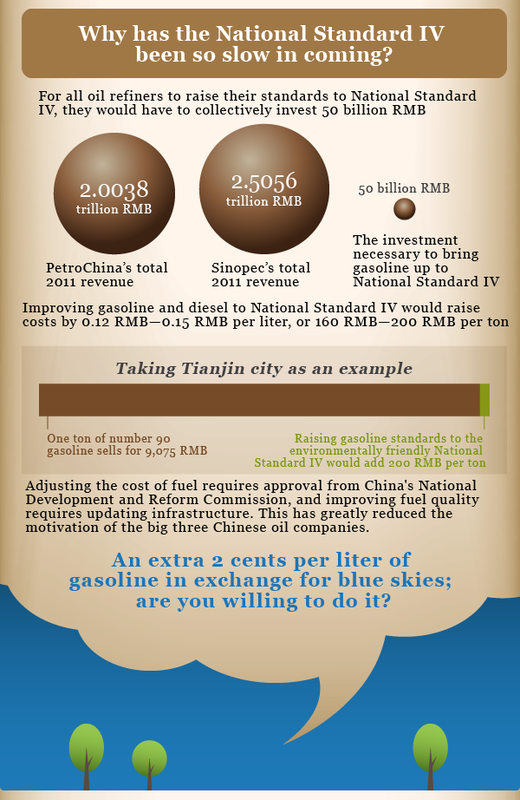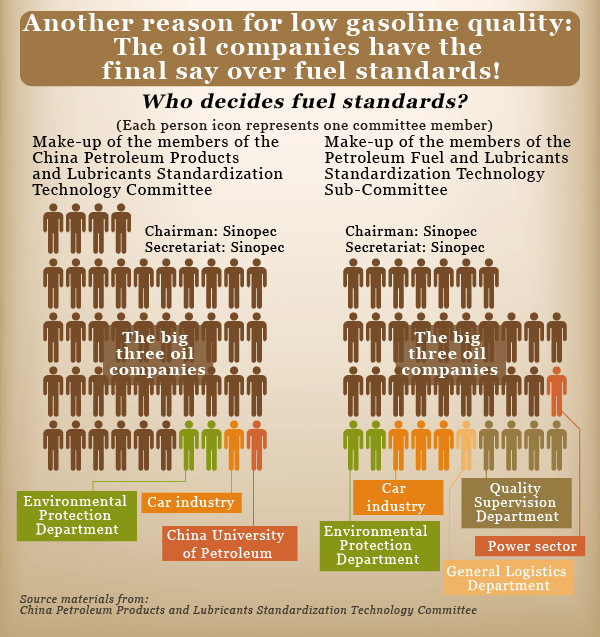China Pollution Cause #2: Changing Transportation Needs
|
As the Chinese middle-class expanded rapidly over the last decade, cars have become the new symbol of wealth. The Chinese economy that was once deemed centuries behind the West is now on the same level field. As millions of rural citizens begin living and working in more modern conditions, the environment is struggling to cope. Many Chinese people who used to simply work in the agricultural industry,used primitive forms of transportation like bicycles. Now, they are commuting to the cities and metropolitan areas adopting cars as the main form of transport. This increasing usage of private transportation poses a challenge for dealing with the hazardous air pollution in urban China. [1]
|
Growing Number of Vehicles in China:
|
Figure 2.0 elucidates the exponential growth of the number of vehicles in China. In 1990, there was less than 10 million vehicles and this has grown to 78 million vehicles in 2010 which is a 680% increase.
"Although car sales have slowed in recent months because of the government's monetary tightening policies and the ending of a stimulus program for car buyers, the long-term desire for auto-mobility remains. Bernstein expects the number of vehicles to double in China, from 78 million to 155 million units over the next five years."[2] |
Travel Speeds?
|
'The relationship between driving speed and pollution isn’t perfectly linear, though. One study suggests that emissions start to go up when average freeway speed dips below 45 miles per hour (mph). They also start to go up dramatically as the average speed goes above 65 mph. So, the “golden zone” for fuel-consumption and emissions from your vehicle may be somewhere between 45 and 65 mph."[4] The Chinese cities shown in figure 2.1(Hong Kong, Chengdu, Guangzhou,Shanghai,Beijing,Wuhan) all have low average travelspeeds with Bejing being the lowest(7.5 miles per hour/12.1km per hour) This means that the vehicles in China are staying longer on the road than they would be in other cities due to traffic jams and stop-and-start traffic(alternating between braking and accelerating), which burns more gas and thus emitting more toxic fumes. Someone running barely under an eight-minute mile could get to their destination faster than a car in Beijing. However, given Beijing’s notorious air pollution, subway train drivers like Gao Fei said:
"To be honest, the more the air is polluted, the more I prefer to drive, as I don't like taking a crowded bus or walking outside in such bad air." [3] |
China's Gasoline Quality:
Governmental:
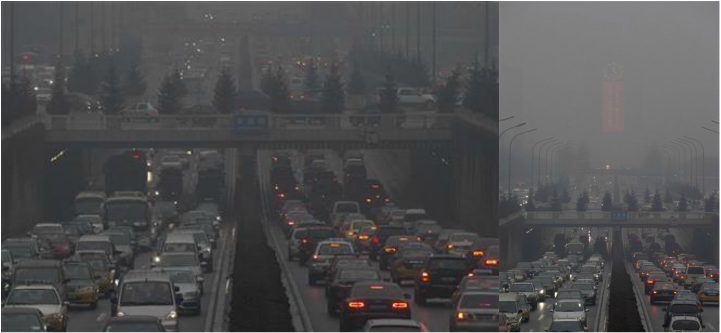
Vehicles crawl along a major road in Beijing, China, Thursday, Jan. 31, 2013. Endless lines of slow-moving cars emerge like apparitions and disappear into the gloom of the thick smog that has shrouded Beijing for weeks and reduced its skyline to blurry gray shapes. With more than 12 million cars sold in China last year, motor vehicles have emerged as the chief culprit for the throat-choking air pollution in big cities especially Beijing.(AP Photo/Ng Han Guan)
[5]
The government has :
1. promoted car buying as a way of keeping the economy growing with banks offering attractive car loans
2. push growth in the interior poorer regions of China by raising salaries.
The 1st action taken has made cars like Gao's Buick Regal (price tag 180,000 yuan, or $29,000) affordable for many Chinese even though the average annual salary in Beijing is 56,000 yuan ($8,900).
The 2nd action provides Chinese people with higher disposable incomes, meaning cars become more affordable and this coupled with the fact that China is the biggest car market in the world by number of vehicles sold allows us to draw the conclusion that we can certainly expect a growth in vehicles in China.
Overall, both actions by the government are detrimental to China's degrading air quality and will result in increased vehicle emissions as there is a lack of effective public transportation, low emission standards and slow development of energy-saving and clean automobile technologies(Asian Development Bank)
1. promoted car buying as a way of keeping the economy growing with banks offering attractive car loans
2. push growth in the interior poorer regions of China by raising salaries.
The 1st action taken has made cars like Gao's Buick Regal (price tag 180,000 yuan, or $29,000) affordable for many Chinese even though the average annual salary in Beijing is 56,000 yuan ($8,900).
The 2nd action provides Chinese people with higher disposable incomes, meaning cars become more affordable and this coupled with the fact that China is the biggest car market in the world by number of vehicles sold allows us to draw the conclusion that we can certainly expect a growth in vehicles in China.
Overall, both actions by the government are detrimental to China's degrading air quality and will result in increased vehicle emissions as there is a lack of effective public transportation, low emission standards and slow development of energy-saving and clean automobile technologies(Asian Development Bank)
References:
[1] James Ellis. (2008). Chinese Pollution.
Available: http://dailyreckoning.com/free-reports/chinese-pollution/.
Last accessed 15th Oct 2014.
[2] Frank Holmes. (2011). How China Drives the Global Economy.Available: http://www.safehaven.com/article/23149/how-china-drives-the-global-economy. Last accessed 6th Oct 2014.
[3]Gwynn Guilford. (2014). A big reason Beijing is polluted: The average car goes 7.5 miles per hour. Available: http://qz.com/163178/a-big-reason-beijing-is-polluted-the-average-car-goes-7-5-miles-per-hour/. Last accessed 15th Oct 2014.
[4] Paul Sanders. (2012). How Traffic Jams Affect Air Quality. Available: http://www.environmentalleader.com/2012/01/05/how-traffic-jams-affect-air-quality/. Last accessed 15th Oct 2014.
[5] Louise Watt. (2013). China's love affair with cars chokes air in cities.Available: http://bigstory.ap.org/article/chinas-love-affair-cars-chokes-air-cities. Last accessed 7th Oct 2014.
[6] David Wertime . (2013). Where Does Beijing’s Pollution Come From?.Available: http://www.tealeafnation.com/2013/02/where-does-beijings-pollution-come-from/. Last accessed 24th Oct 2014.
[2] Frank Holmes. (2011). How China Drives the Global Economy.Available: http://www.safehaven.com/article/23149/how-china-drives-the-global-economy. Last accessed 6th Oct 2014.
[3]Gwynn Guilford. (2014). A big reason Beijing is polluted: The average car goes 7.5 miles per hour. Available: http://qz.com/163178/a-big-reason-beijing-is-polluted-the-average-car-goes-7-5-miles-per-hour/. Last accessed 15th Oct 2014.
[4] Paul Sanders. (2012). How Traffic Jams Affect Air Quality. Available: http://www.environmentalleader.com/2012/01/05/how-traffic-jams-affect-air-quality/. Last accessed 15th Oct 2014.
[5] Louise Watt. (2013). China's love affair with cars chokes air in cities.Available: http://bigstory.ap.org/article/chinas-love-affair-cars-chokes-air-cities. Last accessed 7th Oct 2014.
[6] David Wertime . (2013). Where Does Beijing’s Pollution Come From?.Available: http://www.tealeafnation.com/2013/02/where-does-beijings-pollution-come-from/. Last accessed 24th Oct 2014.
